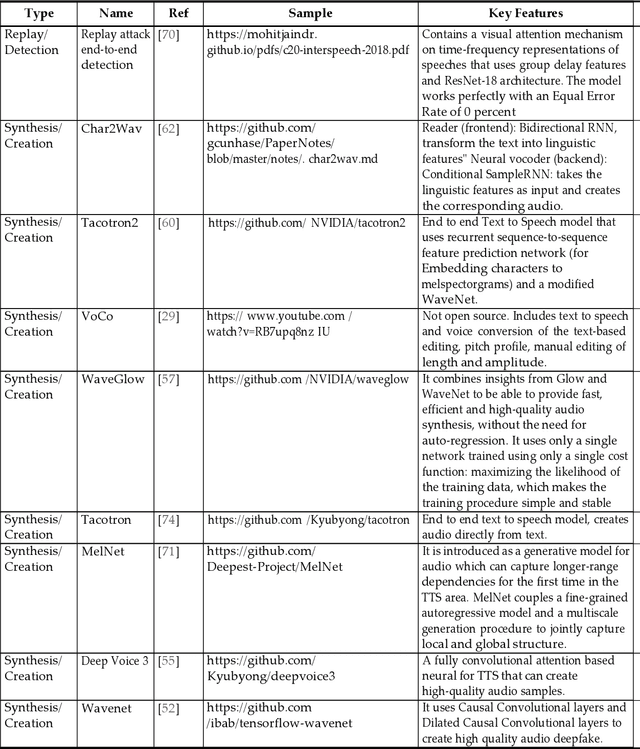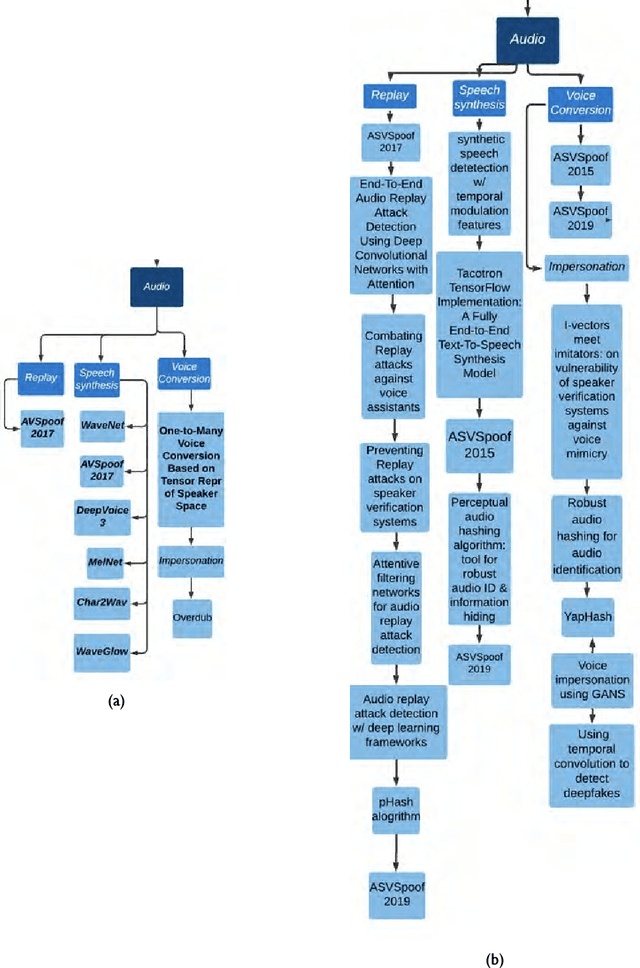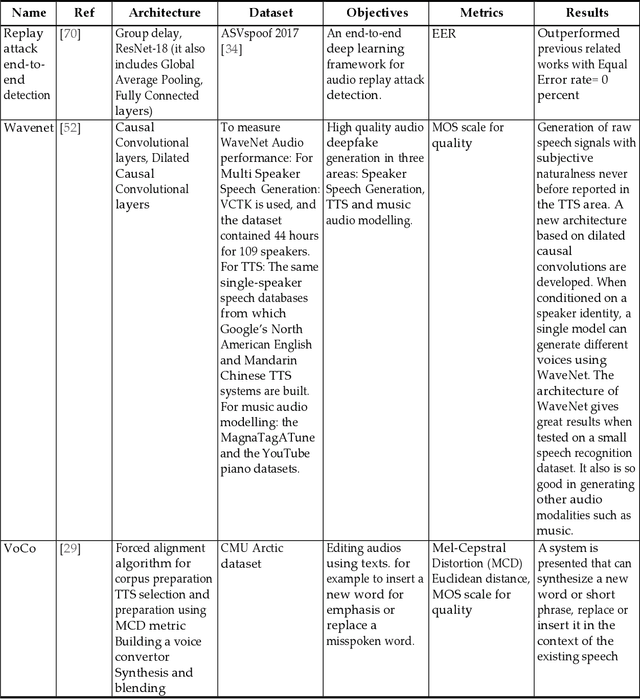How Deep Are the Fakes? Focusing on Audio Deepfake: A Survey
Paper and Code
Nov 28, 2021



Deepfake is content or material that is synthetically generated or manipulated using artificial intelligence (AI) methods, to be passed off as real and can include audio, video, image, and text synthesis. This survey has been conducted with a different perspective compared to existing survey papers, that mostly focus on just video and image deepfakes. This survey not only evaluates generation and detection methods in the different deepfake categories, but mainly focuses on audio deepfakes that are overlooked in most of the existing surveys. This paper critically analyzes and provides a unique source of audio deepfake research, mostly ranging from 2016 to 2020. To the best of our knowledge, this is the first survey focusing on audio deepfakes in English. This survey provides readers with a summary of 1) different deepfake categories 2) how they could be created and detected 3) the most recent trends in this domain and shortcomings in detection methods 4) audio deepfakes, how they are created and detected in more detail which is the main focus of this paper. We found that Generative Adversarial Networks(GAN), Convolutional Neural Networks (CNN), and Deep Neural Networks (DNN) are common ways of creating and detecting deepfakes. In our evaluation of over 140 methods we found that the majority of the focus is on video deepfakes and in particular in the generation of video deepfakes. We found that for text deepfakes there are more generation methods but very few robust methods for detection, including fake news detection, which has become a controversial area of research because of the potential of heavy overlaps with human generation of fake content. This paper is an abbreviated version of the full survey and reveals a clear need to research audio deepfakes and particularly detection of audio deepfakes.
 Add to Chrome
Add to Chrome Add to Firefox
Add to Firefox Add to Edge
Add to Edge